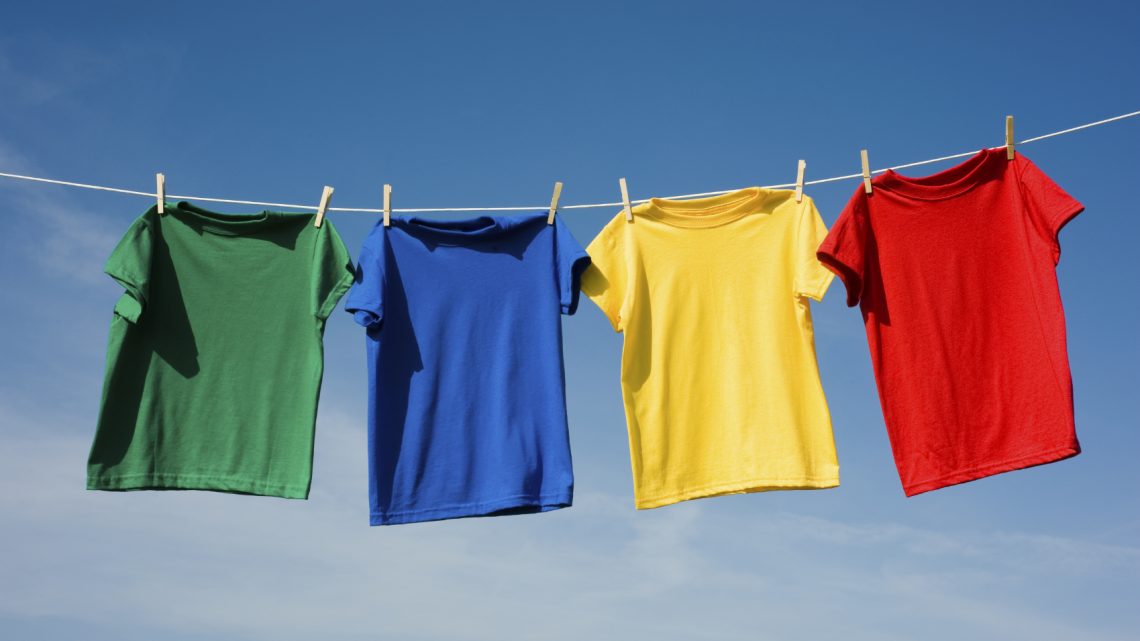You’ve probably thought of many ways to reduce, reuse and recycle around your house and yard. But what about your wardrobe? Doing laundry is a never-ending process that affords opportunity for downsizing your carbon footprint. Here are a few things you may want to consider.
Reduce the Amount of Laundry
Most clothes (excluding socks and underwear) do not need to be laundered after only one wearing. Dress in layers and skip washing outer garments. If you choose clothes suitable for your task (keeping dressy clothes for best and work clothes for work) you can minimize your washing. Shake your clothes when you take them off, then hang them outside if possible for a few hours to air. For temporary protection from food spills, dirt, etc., wear an apron or old shirt over your clothes.
Use the Best Products
When you do need to launder clothes, the first line of defense for the environment is to use as few chemicals as possible. Take time to research the ingredients of any product you plan to use. The general rule of thumb when selecting an earth friendly laundry detergent is to go basic. Chances are, the fewer ingredients the laundry detergent has listed, the better it will be for the environment.
Some brands you may want to try include Seventh Generation, ECover and Bi-O-Kleen. All these brand are environmentally friendly and are great for individuals with sensitive skin.
Consider your Appliances
With the ever increasing size of the standard home washing machine, the average home laundry room is a large source of water waste. Knowing if your appliances are Energy Star rated is important. Older non-rated washing machines use an average of 40 gallons of water per load. Energy Star washing machines use around 20 gallons of water per load, making them considerably more efficient.
One of the biggest environmental burdens in your laundry room is your dryer. Clothes dryers use large amounts of electricity and emit carbon dioxide. Try hanging clothes on a rack or a line outside to dry. Sunlight is a natural disinfectant and helps to remove odors.
Unfortunately, due to allergies and location, line drying isn’t an option for everyone. If you must use a clothes dryer, select the moisture setting to keep it from running unnecessarily. Also, using the air dry setting will dry your clothes using cold air, thus reducing energy used and wrinkles.
Skip dryer sheets that contain chemicals and do not readily biodegrade in land fills. For softer clothes, add a half cup of white vinegar to each wash load during the rinse cycle. Vinegar acts as a natural fabric softener and is safe for people with sensitive skin.
At the Dry Cleaners
For many years, perchloroethylene (“perc”) has been the solvent of choice for many “dry” cleaners. Perc has a particular odor and has been shown by the state of California to contaminate soil, water and air. A dry cleaning solvent called GreenEarth® is an alternative to perc that an increasing number of environmentally couscious dry cleaners are now utilizing. Ask your cleaner to explain their methods and safety practices and how they handle their waste stream. Eco-friendly cleaners will also offer reusable dry cleaning bags.
If Green dry cleaning isn’t available yet in your area you can avoid the toxins and save your money by hand washing in cold water many articles that are labeled “dry clean only.” If you’ve been able to install a rain barrel, use rain water for soaking your hand washables. Then you will need only the tiniest bit of soap, as rain water is very soft.
More designers are now offering Eco-friendly fabrics that do not require much care. Look for natural fabrics such as wool that can just be aired out instead of constantly cleaned.
Buy Less and Gently-Used
No matter your methods for doing laundry, buying fewer clothes and gently-used clothing is an easy way to take your wardrobe to a new level of green living. Check out local consignment and thrift shops. Or, to buy and sell online, visit sites like exching.com or runwayclothesconsignment.com.









